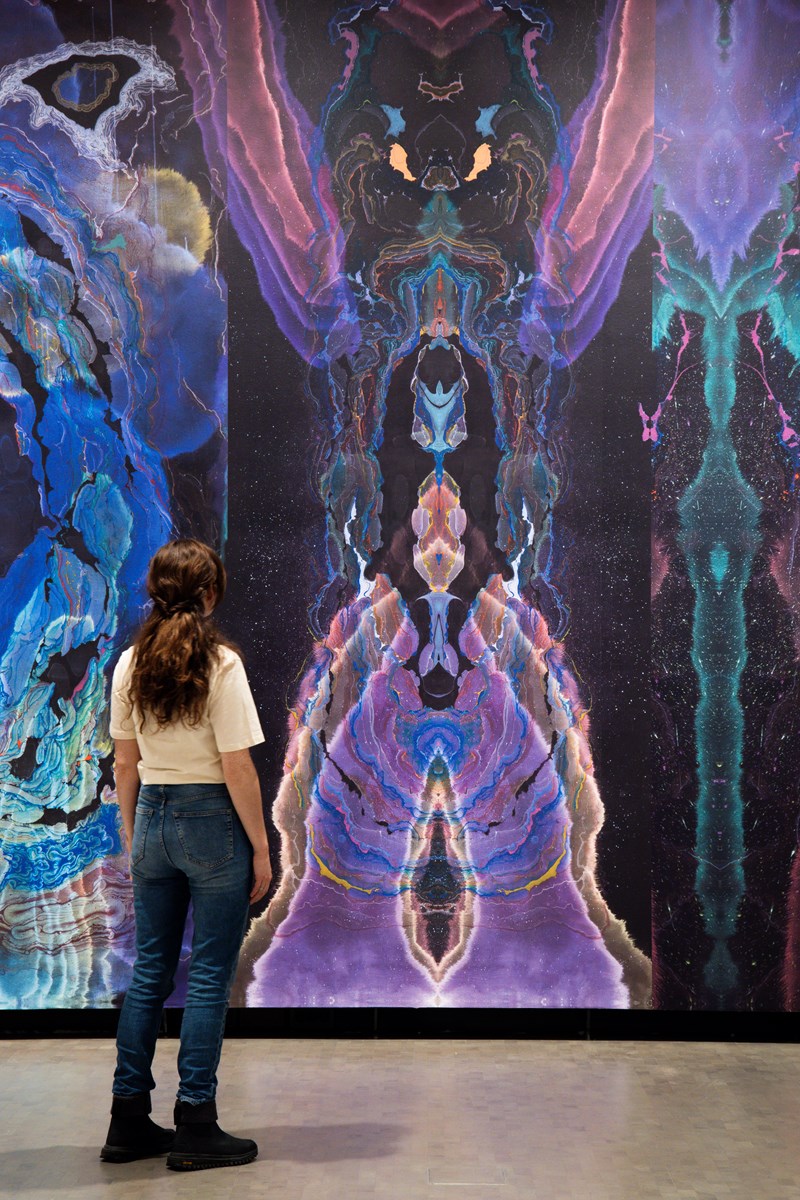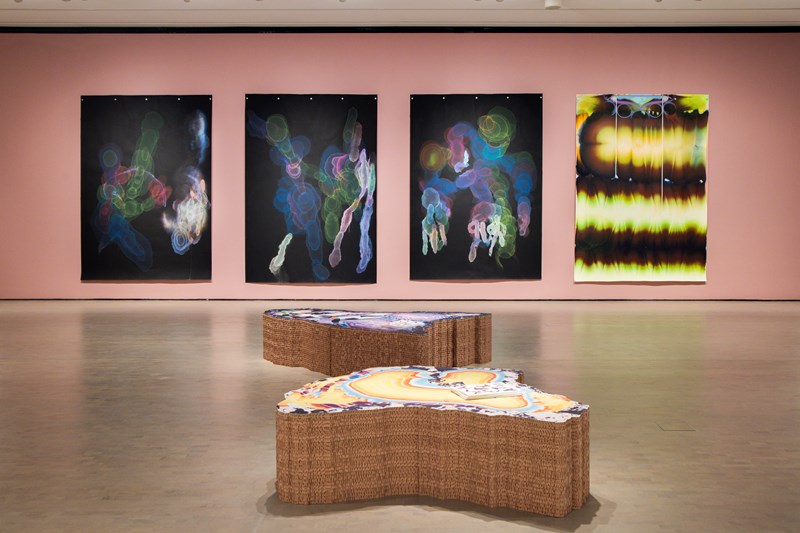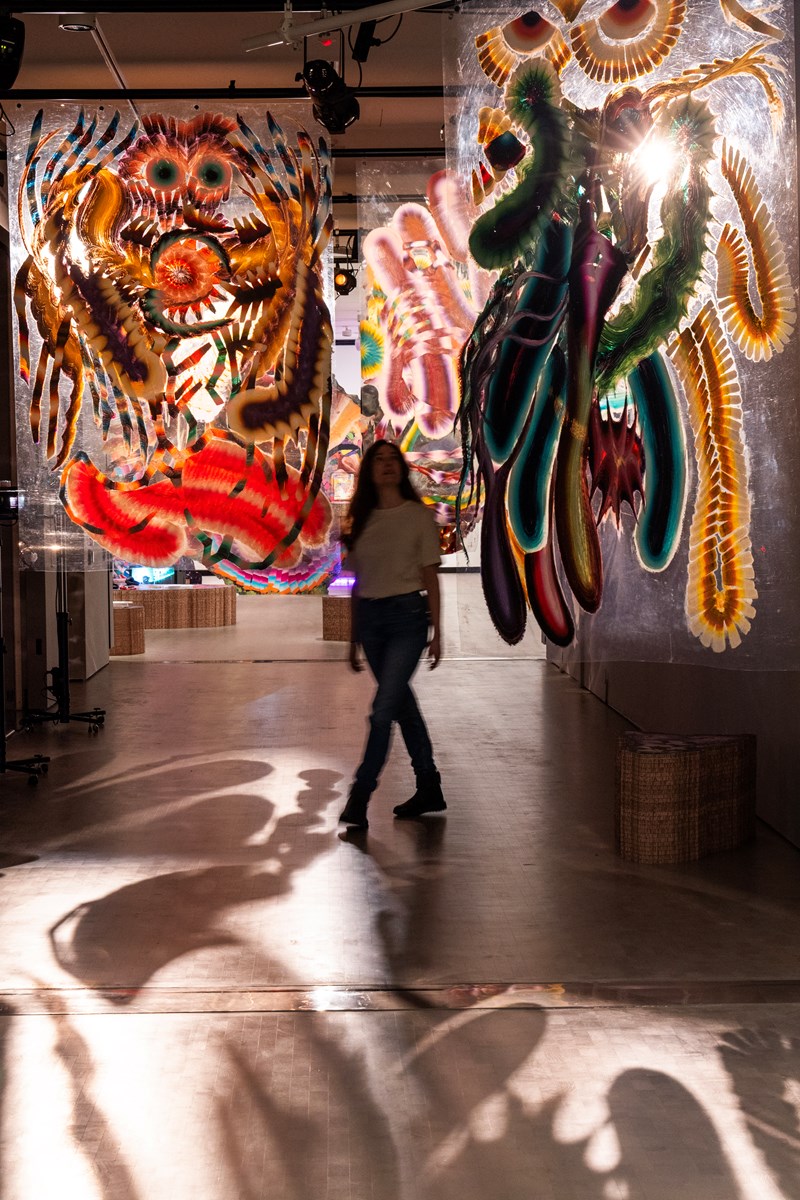Five Highlights in METAATEM
Fortune tellers, streams of energy and collaboration. In Kerstin Brätsch’s MƎTAATEM the German artist stretches the limits of painting. Here are five things you need to know about the exhibition.

Photo: Ove Kvavik, Munchmuseet
1. A Space where Everything can be Art
For Kerstin Brätsch, art is more than just stuff hanging on the wall – it’s also the walls themselves. The exhibition spaces feature free-standing wall partitions made of cardboard layers, cut out in the shape of some of her artworks. These partitions are covered with huge marbling prints, framing the entire space with Brätsch’s distinctive style. She has even designed the cardboard benches herself. You can sit on these as you take in all the art in the room, and at the same time the boundary between a functioning piece of furniture and an art object is wiped out. In this way, you the visitor are placed in direct contact with aspects of her art, which is in turn affected by movements and disturbances during the exhibition period.
2. New artworks at MUNCH
The ATEM series of large psychedelic paintings has been created especially for this exhibition at MUNCH. They have also given rise to one part of the exhibition’s title, together with the MƎTA series in which Brätsch has assembled more than 300 small paintings on one wall. Both series build on and explore the same idea: the brushstroke as a living organism, or an energy current in constant transformation. As part of the collective DAS INSTITUT, in collaboration with composer Sergei Tcherepnin, Brätsch has also created the new work [...CO {S} MIC ABSTRACTION…]. Images and video footage blend into flickering memories and visual impressions.

Photo: Ove Kvavik, Munchmuseet
3. Long Lines
Several of her series talk to and build upon each other, displaying the long thematic lines in Brätsch’s artistry. For instance, several works in the MƎTA series are based on her Para Psychics works, which date back to the early 2000s. At the time, Brätsch visited around 100 psychics and palm readers to have her fortune told. She wanted to explore and ask questions about her role as a painter in a male-dominated art historical context. The question of what it means to be a painter, and how both artist and viewer should relate to a painting, has been a red thread through all of her artistic practice.
4. Collaborative Heart
At the heart of Brätsch’s art is collaboration with other artists and craftspeople. She learns and utilises traditional, forgotten techniques such as marbling, by studying and working with masters in various crafts. Additionally, many works in the exhibition are the result of collaborations with other artists going back many years, as with the collective DAS INSTITUT and the duo KAYA. By bringing in different types of knowledge she breaks down the idea of the lone, single-minded artist.

Photo: Ove Kvavik, Munchmuseet
5. NORTH TOMB – A Ballet of Painting
One work that really shows the importance of cooperation for Brätsch is NORTH TOMB. In the passageway linking the two exhibition spaces, Brätsch, together with composer Sergei Tcherepnin and artist Adele Röder, have created an installation which fuses translucent Mylar paintings, neon grave guards, pastoral electronic music and small figures projected on the walls. NORTH TOMB pulls you into an immersive experience in which visual art and sound create a kind of dance – or as the artist herself describes it: a ballet of painting.


